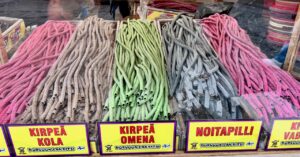A Turning Point for IO at SITC 2024?

Choices, oh so many choices!
We’ve been following the IO wave for over a decade now and one of the questions that comes to my mind is whether we are about to experience what the Germans would call a change in times, or ‘Zeitenwende.’
The Duden German dictionary describes Zeitenwende as “the ending of an epoch or era and the beginning of a new time.”
Readers may recall it was famously used by Germany Chancellor Olaf Scholz after the Russian invasion of Ukraine in 2022 to describe how this was a turning point in European and Germany history, albeit in not necessarily a good way.
Are we at a turning point in IO for the better rather than worse?
After the initial wave of success with low hanging fruit, we’ve sadly seen more failures than successes although we’re starting to see signs that new strategies may yet deliver the promise and potential we all hoped for way back when.
In this post we take a look at 10 presentations to watch out for at SITC 2024 around the theme of Zeitenwende. Check it out!
To continue reading our latest highlights on oncology new product development including commentary and analysis BSB subscribers can log-in or you can click to access the content.
This content is restricted to subscribers

 The first virtual 2021 AACR annual meeting starts tomorrow in earnest and we’ll be posting throughout the conference with various highlights and analysis.
The first virtual 2021 AACR annual meeting starts tomorrow in earnest and we’ll be posting throughout the conference with various highlights and analysis.